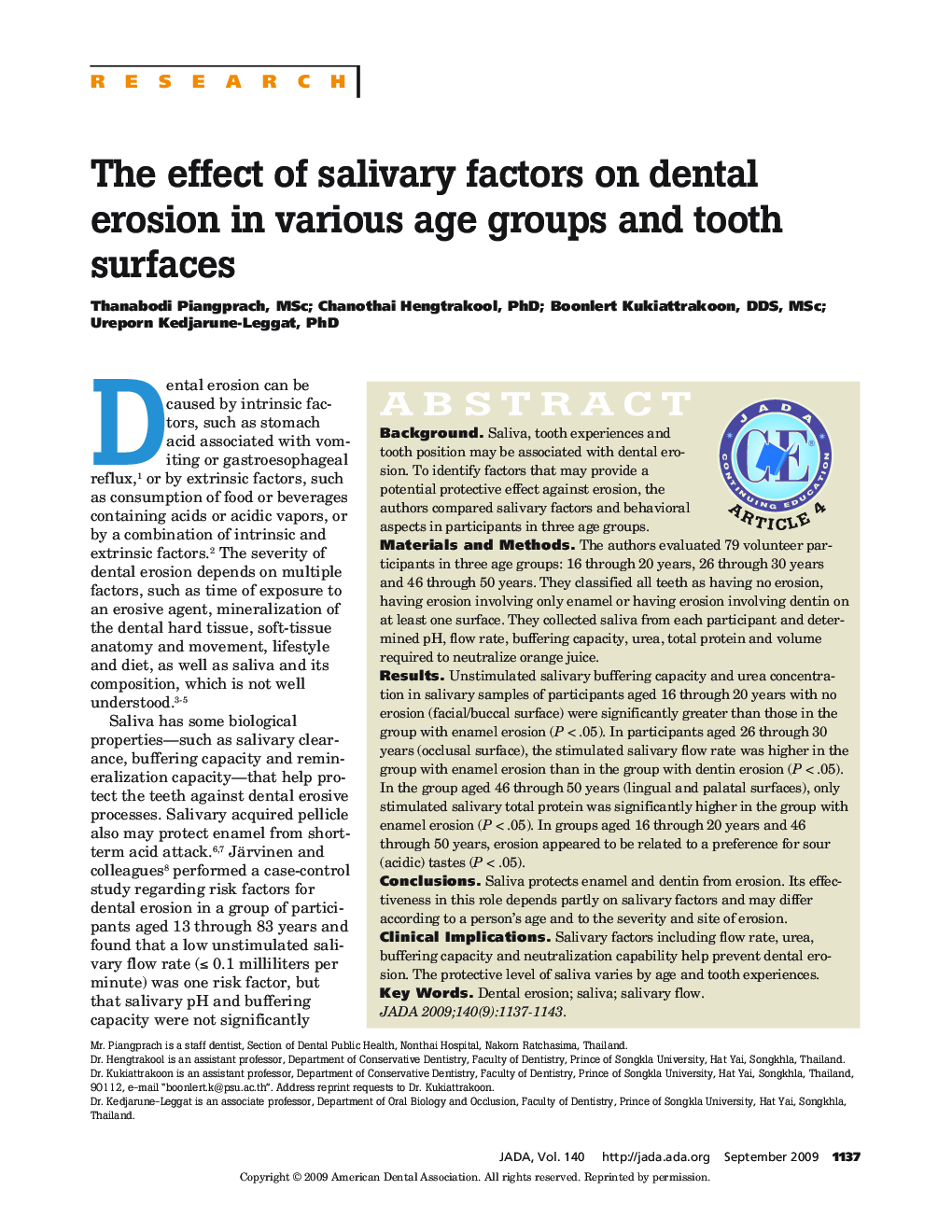| Article ID | Journal | Published Year | Pages | File Type |
|---|---|---|---|---|
| 3139148 | The Journal of the American Dental Association | 2009 | 7 Pages |
ABSTRACT BackgroundSaliva, tooth experiences and tooth position may be associated with dental erosion. To identify factors that may provide a potential protective effect against erosion, the authors compared salivary factors and behavioral aspects in participants in three age groups.Materials and MethodsThe authors evaluated 79 volunteer participants in three age groups: 16 through 20 years, 26 through 30 years and 46 through 50 years. They classified all teeth as having no erosion, having erosion involving only enamel or having erosion involving dentin on at least one surface. They collected saliva from each participant and determined pH, flow rate, buffering capacity, urea, total protein and volume required to neutralize orange juice.ResultsUnstimulated salivary buffering capacity and urea concentration in salivary samples of participants aged 16 through 20 years with no erosion (facial/buccal surface) were significantly greater than those in the group with enamel erosion (P < .05). In participants aged 26 through 30 years (occlusal surface), the stimulated salivary flow rate was higher in the group with enamel erosion than in the group with dentin erosion (P < .05). In the group aged 46 through 50 years (lingual and palatal surfaces), only stimulated salivary total protein was significantly higher in the group with enamel erosion (P < .05). In groups aged 16 through 20 years and 46 through 50 years, erosion appeared to be related to a preference for sour (acidic) tastes (P < .05).ConclusionsSaliva protects enamel and dentin from erosion. Its effectiveness in this role depends partly on salivary factors and may differ according to a person's age and to the severity and site of erosion.Clinical ImplicationsSalivary factors including flow rate, urea, buffering capacity and neutralization capability help prevent dental erosion. The protective level of saliva varies by age and tooth experiences.
